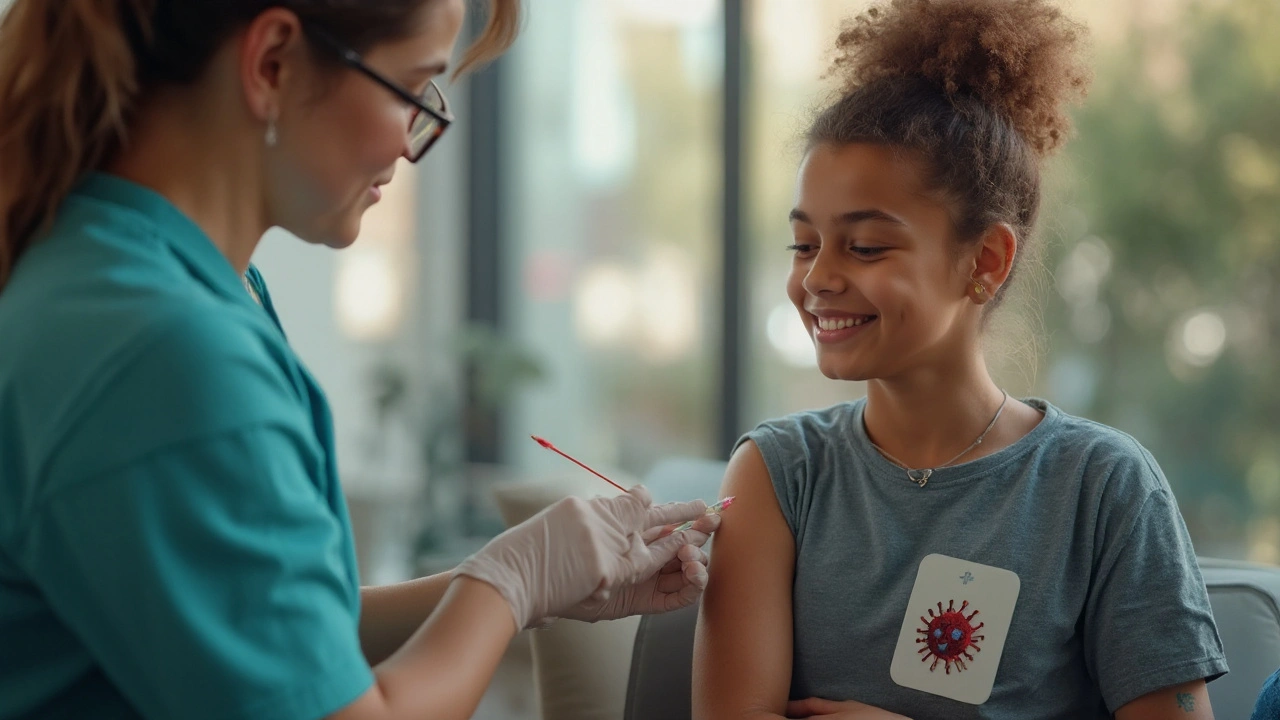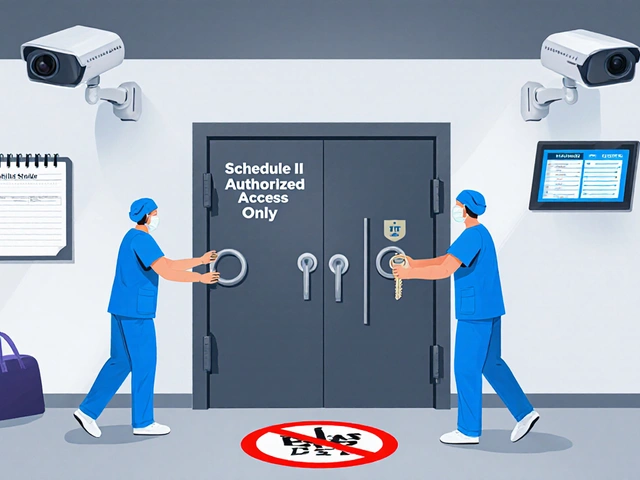Bladder infection treatment is a medical approach aimed at eradicating urinary tract infections (UTIs) that affect the bladder wall and surrounding tissues. With rising Antibiotic Resistance the ability of bacteria to survive standard drug regimens, researchers are racing to replace or augment traditional antibiotics with smarter, more targeted solutions.
Why the Status Quo Is Unsustainable
UTIs account for roughly bladder infection treatments in 150million clinical visits worldwide each year. The standard regimen-short‑course broad‑spectrum antibiotics-faces two major setbacks. First, the Antibiotic Resistance trend documented by the WHO, showing a 30% increase in resistant E.coli strains over the past decade. Second, many patients experience recurrent infections because the drugs cannot fully penetrate bacterial biofilms that line the bladder epithelium.
These challenges have turned UTIs into a chronic health issue for up to 25% of women after a first episode, prompting a demand for novel therapeutic pathways.
Non‑Antibiotic Therapies on the Horizon
Three innovative platforms are gaining traction in clinical pipelines.
- Phage Therapy the use of viruses that specifically infect and kill bacteria - a 2023 European trial showed a 68% cure rate for multidrug‑resistant UTI strains using a cocktail of engineered bacteriophages.
- Nanoparticle Drug Delivery tiny carriers that transport antibiotics or antiseptics directly into biofilms - pre‑clinical models report a five‑fold reduction in required drug dose while achieving deeper bladder tissue penetration.
- CRISPR Antimicrobial gene‑editing tools programmed to cut essential bacterial genes, disabling pathogens without harming human cells - early‑phase studies in 2024 demonstrated selective killing of uropathogenic E.coli in mouse bladders.
| Therapy | Mechanism | Resistance Risk | Treatment Duration | Regulatory Status (2025) |
|---|---|---|---|---|
| Traditional Antibiotics | Inhibit bacterial cell wall synthesis | High | 3‑7days | Approved |
| Phage Therapy | Virus‑mediated bacterial lysis | Low (species‑specific) | Single‑dose or short course | Compassionate use, PhaseII trials |
| Nanoparticle Delivery | Targeted drug release inside biofilm | Very Low | 1‑2days (high potency) | Pre‑clinical, PhaseI pending |
| CRISPR Antimicrobial | Gene disruption of essential bacterial loci | Negligible | Single administration | Early PhaseI |
Modulating the Urinary Microbiome
The bladder is no longer viewed as sterile. Recent metagenomic surveys (2022-2024) identified over 200 bacterial species that coexist in a healthy urinary tract. Leveraging this community, Probiotic Therapy administration of beneficial microbes to outcompete pathogens aims to restore balance after antibiotic courses.
One 2023 double‑blind trial used Lactobacillus crispatus capsules and reported a 45% reduction in recurrence over six months compared with placebo. Researchers also experiment with "bacterial interference"-introducing engineered harmless strains that produce anti‑adhesive molecules, preventing uropathogenic E.coli from sticking to bladder cells.
Rapid Diagnostics Powered by AI
Speedy, accurate detection is crucial for matching patients with the right therapy. Rapid Diagnostic Test point‑of‑care urine analysis using microfluidic chips and AI‑driven pattern recognition can identify bacterial species and resistance genes within 15minutes.
Data from a 2024 multicenter study showed that clinicians who used the AI‑enabled test cut inappropriate antibiotic prescriptions by 38% and shortened hospital stays by an average of 1.2days. The underlying model learns from millions of urine cultures, continuously refining its predictive accuracy.

Preventive Strategies: Vaccines and Immunomodulators
Imagine never having to take a pill for a UTI again. A handful of vaccine candidates are entering PhaseII trials, targeting conserved fimbrial proteins that enable bacteria to attach to urothelial cells. Early animal work demonstrated up to 80% protection against experimental infection.
Beyond vaccines, Immunomodulators agents that boost the host’s innate defenses without directly killing bacteria are being explored. Examples include Toll‑like receptor agonists that accelerate neutrophil recruitment, thereby clearing infections faster while sidestepping resistance pressure.
Clinical Pipeline and Timeline
By the end of 2026, the following milestones are expected:
- PhaseIII data for a phage cocktail targeting ESBL‑producing E.coli (EU).
- Regulatory submission for a nanocarrier‑encapsulated nitrofurantoin formulation (US FDA).
- First‑in‑human safety trial for a CRISPR‑Cas13 antimicrobial (Canada).
- Market launch of an AI‑powered rapid diagnostic device in major tertiary hospitals (UK, Germany).
If these timelines hold, patients could see a transition from blanket antibiotics to precision‑matched, resistance‑free options within the next two to three years.
What This Means for Patients Today
While the future looks promising, you can still take steps now:
- Ask your clinician about urine culture results before starting antibiotics.
- Consider probiotic supplements that contain Lactobacillus species proven to colonize the urinary tract.
- Stay informed about clinical trials in your region-participation accelerates access to novel therapies.
- Adopt preventive habits: proper hydration, post‑coital voiding, and avoiding irritants like harsh soaps.
These actions, combined with emerging science, will help shrink the burden of bladder infections for the next generation.
Frequently Asked Questions
Will phage therapy replace antibiotics entirely?
Not immediately. Phage therapy is most effective against resistant strains and is often used alongside, not instead of, antibiotics. Over time, as more phage cocktails gain approval, they could become first‑line for specific infections.
Are nanoparticle drug carriers safe for everyday use?
Early safety data suggest minimal toxicity because the particles are designed to degrade after delivering their payload. Large‑scale human trials are still needed before routine prescribing.
How accurate are the new rapid diagnostic tests?
Current AI‑enabled devices achieve >95% sensitivity and >93% specificity for common uropathogens, and they can detect key resistance genes within minutes.
Can probiotics really prevent UTIs?
Clinical evidence shows that certain Lactobacillus strains lower recurrence rates, especially when taken after a course of antibiotics. They work best as part of a broader prevention plan.
When might a UTI vaccine become available?
If PhaseIII trials confirm safety and efficacy, regulatory approval could arrive as early as 2028, with commercial availability shortly thereafter.



 Medications
Medications





Corine Wood
September 24, 2025 AT 20:44Really appreciate how this post breaks down complex science into digestible chunks. The shift from broad-spectrum antibiotics to precision tools feels like the medical equivalent of moving from a sledgehammer to a scalpel. I’ve seen friends cycle through UTIs for years - this gives me actual hope.
Steve Harvey
September 25, 2025 AT 05:02They’re lying about CRISPR. This is a stealth bioweapon program disguised as medicine. You think they’re curing UTIs? Nah. They’re mapping your microbiome to build targeted bio-agents. The FDA’s in on it. Look at the funding sources.
Cassaundra Pettigrew
September 26, 2025 AT 20:56Oh wow, so now we’re outsourcing our immune system to lab-grown viruses and nanobots? Classic American overengineering. Meanwhile, China’s using herbal decoctions that work better and cost $2. This isn’t innovation - it’s corporate theater with a PhD.
ryan smart
September 28, 2025 AT 14:01Why not just drink more water like my grandpa said? All this tech is just a scam to make Big Pharma richer.
Brian O
September 29, 2025 AT 21:11Love how this post doesn’t just throw tech at the problem but actually talks about the microbiome. I started taking Lactobacillus after my last UTI - no more recurrences. Small change, huge difference. If you’ve got recurrent infections, give it a shot. No pills, just probiotics.
Gary Katzen
September 30, 2025 AT 03:56I’ve been on antibiotics six times in two years. The thought of a vaccine that stops this before it starts… I’d line up for it. Thank you for sharing this. It’s the first time I’ve felt like there’s light at the end of this tunnel.
Sufiyan Ansari
September 30, 2025 AT 17:05In ancient Ayurvedic texts, urinary health was maintained through triphala, gokshura, and mindful hydration - principles now echoed in modern microbiome science. It is not new wisdom, merely rediscovered. The West seeks complexity; the East remembers simplicity. Both paths converge at the same truth: balance is healing.
Michal Clouser
October 1, 2025 AT 05:17While the technological advancements outlined here are undeniably impressive, it is imperative to acknowledge the ethical, logistical, and socioeconomic implications of deploying such high-cost, high-tech interventions on a global scale. Access to phage therapy or CRISPR-based treatments will likely remain confined to affluent healthcare systems, thereby exacerbating existing disparities in global health outcomes. We must ensure that innovation does not become a privilege.
prem sonkar
October 3, 2025 AT 01:29wait so crisper can kill e.coli? like… just delete its dna? that sounds like sci fi but also kinda awesome? i hope it dont mess up my gut too
Akintokun David Akinyemi
October 4, 2025 AT 11:26As a Nigerian primary care nurse, I’ve seen patients pay for antibiotics they don’t need because there’s no rapid test. This AI diagnostic? It’s not just innovation - it’s liberation. Imagine cutting down on useless pills, saving money, reducing resistance. This is what real healthcare equity looks like. Let’s get this tech to Lagos, not just London.
Jasmine Hwang
October 4, 2025 AT 21:12so… phage therapy is just viruses? like… you’re injecting a virus into your bladder? that’s not a cure, that’s a horror movie. who signed off on this? 🤮
Jake TSIS
October 5, 2025 AT 18:09Everyone’s acting like this is a miracle. Meanwhile, 80% of UTIs resolve on their own with hydration and ibuprofen. This whole thing is a money machine. Stop buying into the ‘medical breakthrough’ hype.
Navin Kumar Ramalingam
October 7, 2025 AT 15:42Interesting. But honestly, the entire narrative here feels like a TED Talk written by someone who’s never met a patient with a real UTI. You don’t cure biofilms with nanoparticles - you manage symptoms until the next episode. This is tech theater for people who think medicine is a startup.
megha rathore
October 8, 2025 AT 21:36so the vaccine is coming in 2028?? 😭 i just had another one last week. i need this like yesterday. plz make it happen. 💔
James Gonzales-Meisler
October 10, 2025 AT 12:44Minor grammatical correction: ‘bladder infection treatments’ is used redundantly in the first paragraph. Also, ‘30% increase in resistant E.coli strains’ - it should be ‘30-percentage-point increase’ if referring to absolute change. Precision matters in science communication.
Maeve Marley
October 12, 2025 AT 03:38I’ve been reading this whole thing while sipping chamomile tea and thinking about how we’ve gone from ‘take this pill’ to ‘here’s a gene-editing tool that only kills the bad bacteria’ - and it’s beautiful. I work in hospice care. I’ve seen people suffer through recurrent infections, terrified of the next one. This isn’t just science. It’s dignity. It’s peace. And honestly? I’m crying a little. Not because it’s perfect - but because it’s possible.
Earle Grimes61
October 13, 2025 AT 18:46Wait - if they’re using phages and CRISPR, they’re already collecting your DNA from every urine sample. This isn’t medicine. It’s a backdoor for the government to track your microbiome. Next thing you know, your insurance will deny coverage if your gut flora is ‘suboptimal.’ They’re not curing UTIs - they’re building a surveillance state.